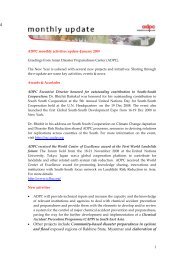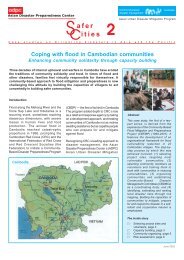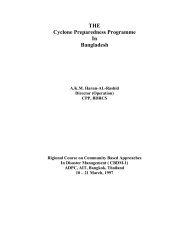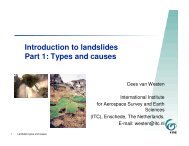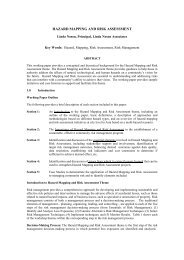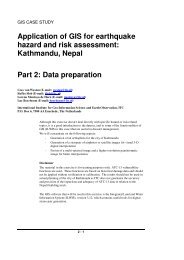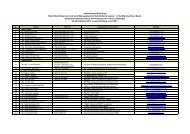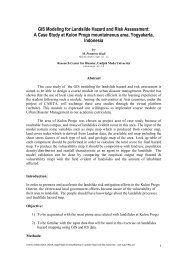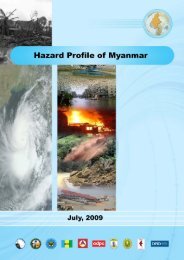community-based disaster risk management and the media media kit
community-based disaster risk management and the media media kit
community-based disaster risk management and the media media kit
Create successful ePaper yourself
Turn your PDF publications into a flip-book with our unique Google optimized e-Paper software.
chapter 3. useful information for <strong>the</strong> <strong>media</strong><br />
The Facts<br />
• Tsunamis that strike coastal locations are almost always caused by<br />
earthquakes. The earthquake might occur far away or near where<br />
you live. While earthquakes occur in all ocean basins around <strong>the</strong><br />
world, most do not generate tsunamis.<br />
• Some tsunamis can be very large. In coastal areas <strong>the</strong>ir height can<br />
be as high as 10 m or more (30 m in extreme cases), <strong>and</strong> <strong>the</strong>y cause<br />
impacts like fl ash fl oods. Later waves are often full of debris.<br />
• All low lying coastal areas can be struck by tsunamis.<br />
• A tsunami consists of a series of waves with crests arriving every<br />
10 to 60 minutes. Often <strong>the</strong> fi rst wave may not be <strong>the</strong> largest. The<br />
danger from a tsunami can last for several hours after <strong>the</strong> arrival of<br />
<strong>the</strong> fi rst wave. Tsunami waves typically do not curl <strong>and</strong> break, so do<br />
not try to surf a tsunami!<br />
• Tsunamis can move faster than a person can run.<br />
• Sometimes a tsunami initially causes <strong>the</strong> water near <strong>the</strong> shore to<br />
recede, exposing <strong>the</strong> ocean fl oor.<br />
• The force of some tsunamis is enormous. Large rocks weighing<br />
several tons, along with boats <strong>and</strong> o<strong>the</strong>r debris, can be moved<br />
inl<strong>and</strong> hundreds of meters by tsunami wave activity, <strong>and</strong> homes<br />
<strong>and</strong> buildings destroyed. All this material <strong>and</strong> water move with great<br />
force, <strong>and</strong> can kill or injure people.<br />
• Tsunamis can occur at any time, day or night.<br />
• Tsunamis can travel up rivers <strong>and</strong> streams, from <strong>the</strong> ocean.<br />
• Tsunami can easily wrap around isl<strong>and</strong>s <strong>and</strong> be just as dangerous<br />
on coasts not facing <strong>the</strong> source of <strong>the</strong> tsunami.<br />
What You Should Do<br />
As dangerous as tsunamis are, <strong>the</strong>y do not happen very<br />
often. You should not let this natural hazard diminish your<br />
enjoyment of <strong>the</strong> beach <strong>and</strong> ocean. But, if you think a<br />
tsunami may be coming, <strong>the</strong> ground shakes under your<br />
feet, <strong>the</strong> ocean recedes out to sea exposing <strong>the</strong> sea<br />
bottom, you hear <strong>the</strong> train-like roar of <strong>the</strong> tsunami, or<br />
you know that <strong>the</strong>re is a warning, tell your relatives <strong>and</strong><br />
friends, <strong>and</strong> MOVE QUICKLY INLAND AND TO HIGHER<br />
GROUND!<br />
101



